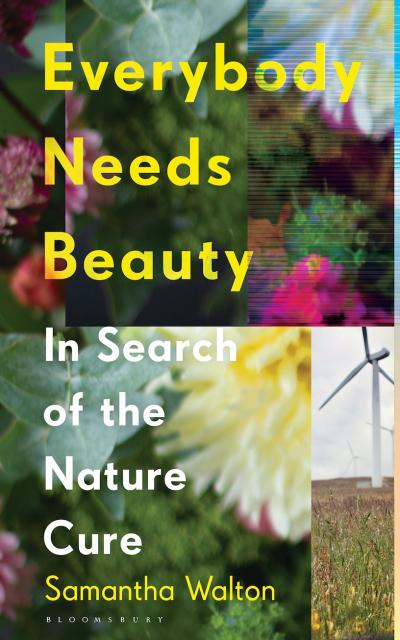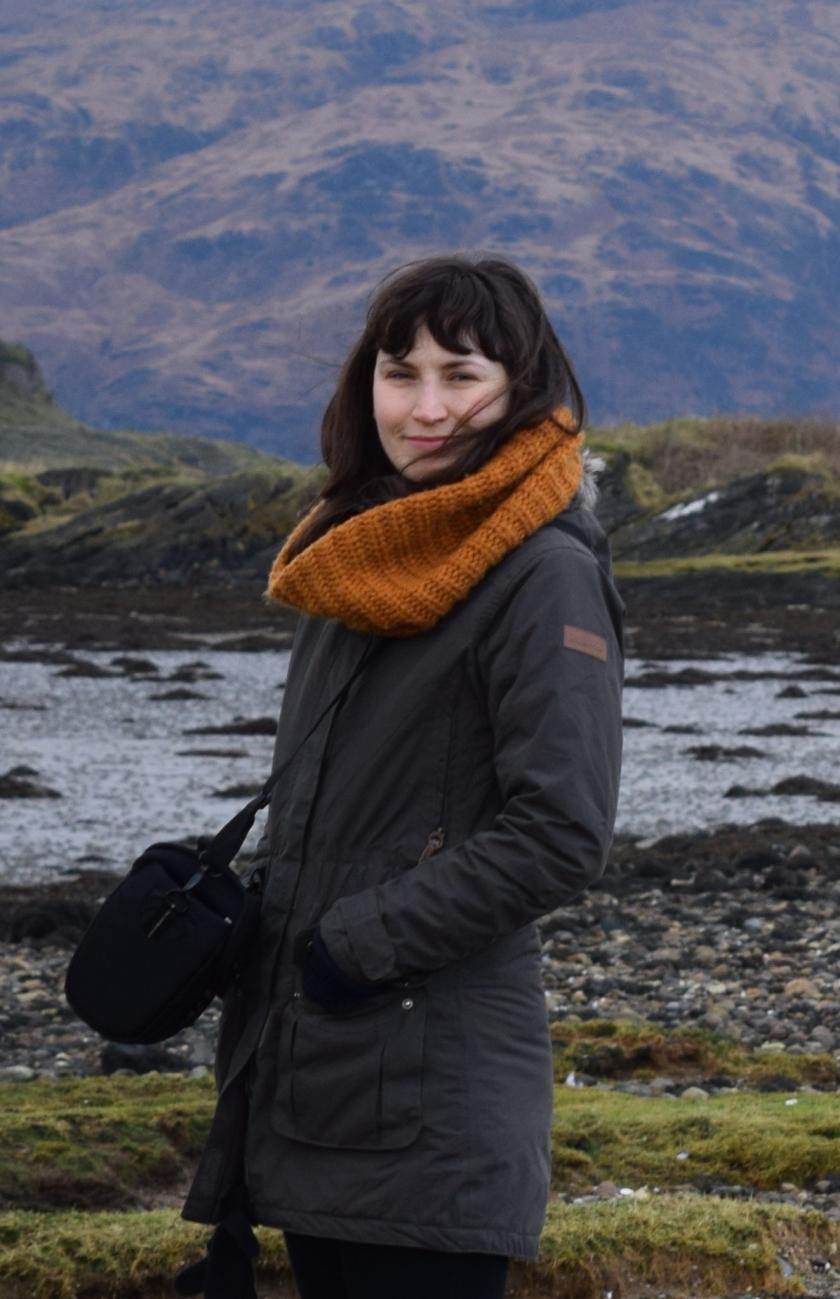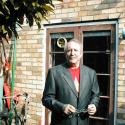In the opening poem of Samantha Walton's 2018 collection, Self Heal, the speaker is on the tube, that evergreen metaphor of capital's specific barrelling momentum. The tube "will help you see yourself properly for once, all the way through", the poem goes, ie. as one of urbanity's little facilitators, one automaton amongst many. The toll of this is self-negation: "it only takes a moment to cut a line into yourself gently / it's a wonder everyone isn't doing it." So the book, ostensibly about healing, opens with harm (the play is made explicit by the prefix "self"). We are not well; how could we be? How, then, do we get ourselves better?
Walton’s new non-fiction book Everybody Needs Beauty takes the same questions as its premise. It is an account of the different ways in which people have sought and continue to seek healing in nature, with the hope that this might illuminate ways of coexisting with the climate crisis and its uniquely deranging set of threats. Walton is not prescriptive about what “healing” might look like, and isn’t indeed particularly interested in decoding “illness”, either, by which she means overwork, poverty, stress, eco-anxiety and other forms of ill-health that broadly stem from capitalistic exploitation and estrangement. The book is, consequently, looking to discover – via a “radical” overhaul of what is meant by wellness and by nature – “if eco-recovery can work both ways”, whether indeed a person can be healthy if their environment is not.
 The book is made up of eight chapters, which take on a different natural force or place (water, mountains, forest, garden, park, farm, virtual nature, and “lost places”). The strongest are the final four, which introduce compromised forms of nature into a conversation that tends to be dominated by the thoroughly wild. The chapters on water and mountains cover somewhat familiar ground: the religiosity that accompanies immersion in water, the mountain as a historical site of masculine conquest, mention of Nan Shepherd and her commitment to “slowness and dedication”, of coming to know the mountain through gentle and regular approach (though I liked the mention of free-soloist Alex Honnold “smearing” his feet across the face of El Capitan, 3,000 feet up with no ropes).
The book is made up of eight chapters, which take on a different natural force or place (water, mountains, forest, garden, park, farm, virtual nature, and “lost places”). The strongest are the final four, which introduce compromised forms of nature into a conversation that tends to be dominated by the thoroughly wild. The chapters on water and mountains cover somewhat familiar ground: the religiosity that accompanies immersion in water, the mountain as a historical site of masculine conquest, mention of Nan Shepherd and her commitment to “slowness and dedication”, of coming to know the mountain through gentle and regular approach (though I liked the mention of free-soloist Alex Honnold “smearing” his feet across the face of El Capitan, 3,000 feet up with no ropes).
Since nature writing’s “renaissance” in the early twenty teens, peaking around 2016 when Charles Foster wrote a book about eating worms down a badger sett with his small son and Melissa Harrison published a book about going on four walks, the genre has become more expansive, which has involved the concept of nature itself being productively troubled. The genre’s white, male, middle-class bent has been tempered too by platforms like The Willowherb Review, Natasha Carthew’s nature writing prize for working-class writers, and the efforts of writers and organisations that foreground work by BAME, LGBT+, and disabled writers and artists (Walton herself wrote about these efforts here, in 2019). This text marks an intervention into the bias once more: it is geographically wide-ranging, more interested in the structural than the personal, and the systems of governance that impede or encourage specific ways of communing with the natural world.
In the forest chapter, Walton tackles the central issue with the “nature cure”, which is that it is often relied upon to sustain a capitalism that exploits both nature and worker, a manoeuvre that Walton calls “a way of repairing ourselves for more work”. She illustrates this through looking into the history of “forest bathing”, which incorporates Buddhist and Shinto practices but was invented by the Japanese Ministry of Agriculture, Forestry and Fisheries as a direct response to a culture of overwork so noxious that the deaths it caused have been given their own name, karoshi. Therapies such as these, Walton suggests, are sometimes no more than the attempt to short-cut workers back to the level of health required for more work.
In “Park”, Walton traces the history of Central Park back to the 16th century, when it was first colonised by Europeans. Now a highly artificial set of mini-terrains built by the first American landscape architect, Frederick Law Olmsted, Manhattan was once a “vibrant ecology of wetlands and waterways”, home to the Lenni Lenape people, and the habitats of “wolves, black bears, and mountain lions”. As Walton writes, “long before the lawns of Central Park were laid, these traces were destroyed as Indigenous land was divided up between merchant families, and the haunts of beavers, tree frogs, and bog turtles broken and forgotten”. In this chapter, Walton also draws attention to the impositions of Englishness on landscapes around the world: remnants of colonial violence, locations of “contradiction and pain”. She quotes Olivette Otele on the aristocratic park as one of the “reluctant sites of memory”, representing both the ecologically ravaging impact of colonisation and the layering of a false civility on top.
As colonial artefacts, sites of displacement, and representations of a forced tameness, parks are not where much nature writing spends its time. They are often sad little patches of lawn in a new development that promises “access to green space”; largely ecologically sterile, these strips of grass fail to provide homes for insects, wild plants, or animals, or indeed places of refuge for people. They were also often funded in the UK by wealthy industrialists, “the same people who employed the workers whose health and happiness was… deteriorating in their factories”. Yet these sites are a “life line” for people living in cities, evidence of which came during the first Coronavirus lockdown, which made people “newly desperate to be in parks”; what Owen Hatherley identified as a “free and spontaneous” reclamation of public space. Walton’s chapter ends with a call to reinforce this by giving parks over to people and wildlife: “what would it mean to have a wetland in a city park, or animals grazing, or places to pick fruit, or to turn city streets into forests where people learn about the natural processes that make the earth truly liveable?” Parks become homes for ecology and community, capable of change and surprise. As Walton writes, “I don’t want just enough nature. I want more.”
Everybody Needs Beauty builds to the conclusion that it is not the experience of being in nature that makes us feel better, but that the soul is bolstered by a sense of the self’s complicity, presence, and ability to provide care. The threat of dislocation posed by climate change is existential because it attacks the system of relations by which human beings make sense to ourselves; any attempt at a "cure" that fails to take this network into account will remain insufficient.
This is a book which is comprehensive, rather than exhilarating. A call for more connection and a radical reassessment of the implication of the human within the non-human is clearly necessary. However, without significant structural suggestions for how this might be brought about – besides the inner-city wetlands – the book may struggle to bring about the reorientation it sets out to achieve. Sometimes this is reflected in pockets of conservatism: in an analysis of DH Lawrence’s short story “Sun”, Walton describes the “rapturous sexual and emotional awakenings” that Lawrence’s women often experience in “wild places”, before writing that this is “thankfully, many miles apart from modern forest therapies”. Why thankfully? In my ecological imaginary, I don’t want just enough degeneracy; I want more.
However, the book does serious work in imagining what urban spaces could be, if people other than property developers and nervous councils were involved in their direction. Via her attentiveness to language, Walton often highlights moments where words might mark or effect a redistribution of relation: the little girl who, under the tutelage of London’s first Black head-teacher Beryl Gilroy in the 1940s, says that “sparrers ain’t birds – they’re Londoners”; or the word aanikoobijigan in the Anishinaabe tradition (a group of Indigenous people across what is now called Canada and the United States), which means both “ancestor” and “descendent”. Both of these instances showcase the ability for language to illuminate ways of thinking that are less paternalistic, more playful. Other examples can be found in Walton’s poetry, particularly the “Animal Poems” of Self Heal, which range from the gently rapturous (lapwing: “flutter of near wake dream state / could be real or not / same as anything”) to the wry (octopus: “a bad idea all round”) and on to the transcendent (midges: “interference”).
Our “minds are constantly expanding”, Walton writes: triassic rocks no longer induce feelings of existential nausea, as they did to early geologists, as we better learn how old the planet is and how long we have been on it. The challenge that faces us, then, is how to “cope and retain hope” in a profoundly unhealthy world; to “imagine and create a different world”, animated by reciprocity rather than extraction. This book might not feel like the most radical of interventions, but in its conscientiousness and breadth, it is a good place to start.
- Everybody Needs Beauty: In Search of the Nature Cure by Samantha Walton (Bloomsbury, £16.99)
- Read more book reviews on theartsdesk















Add comment